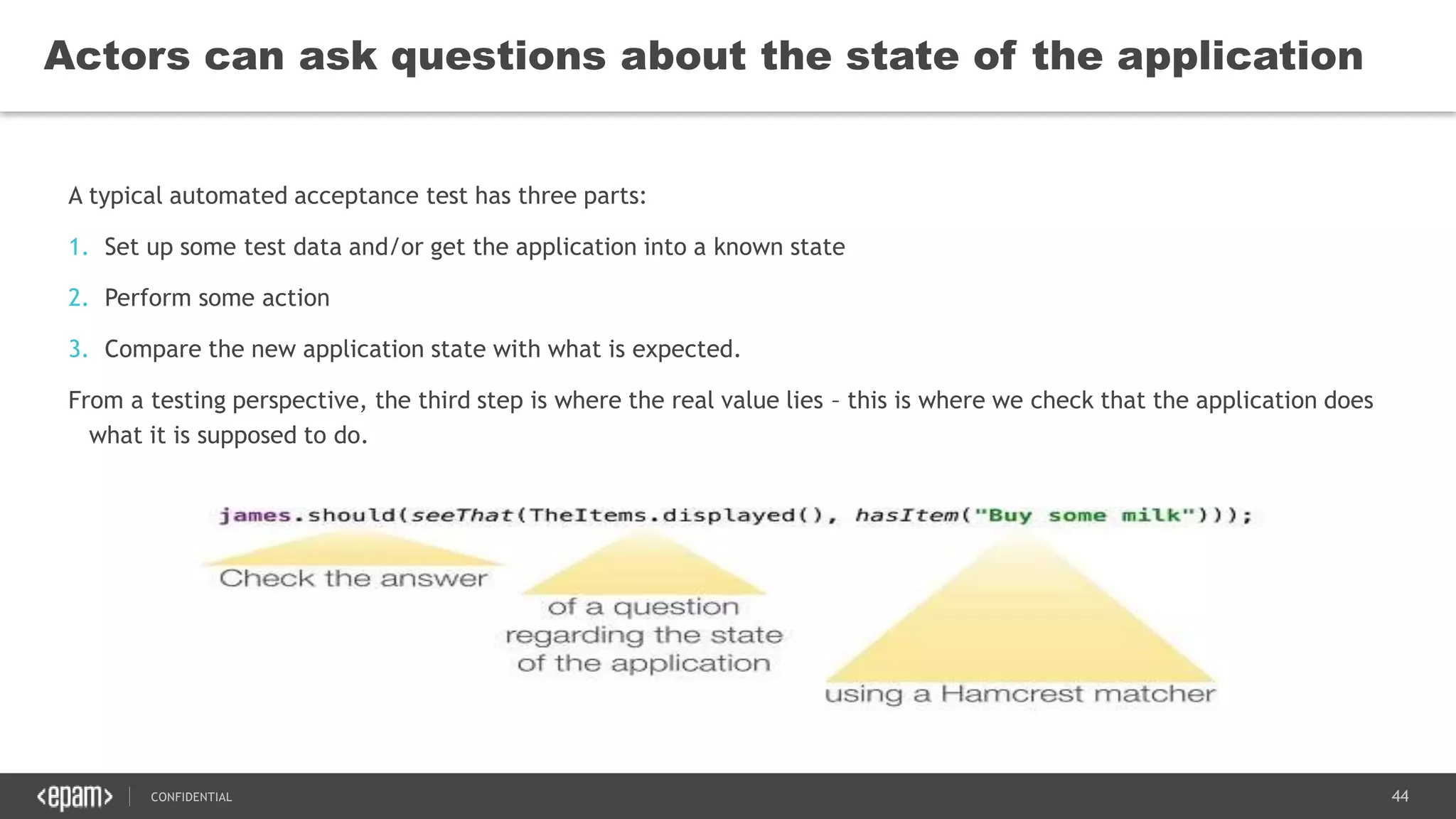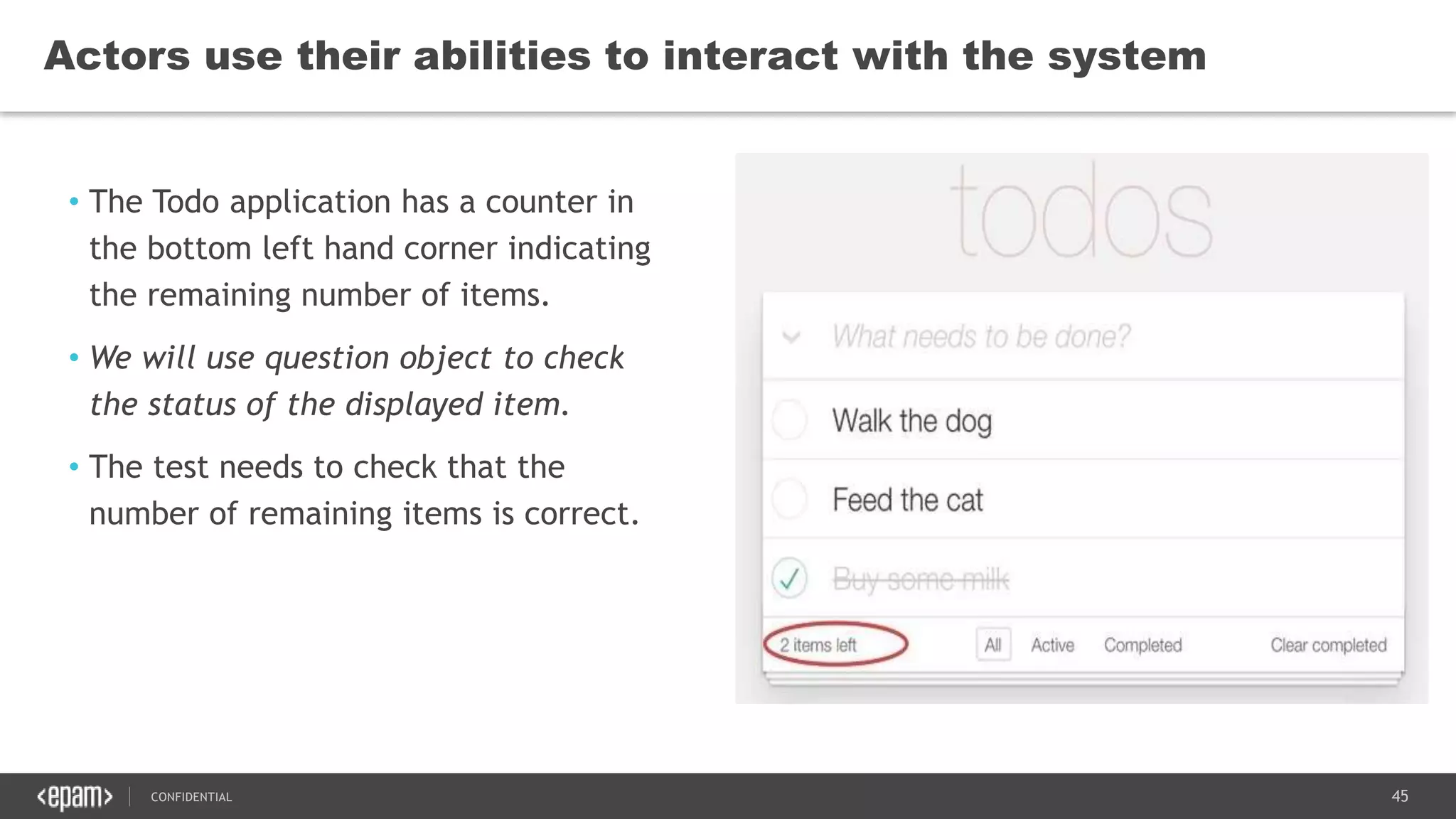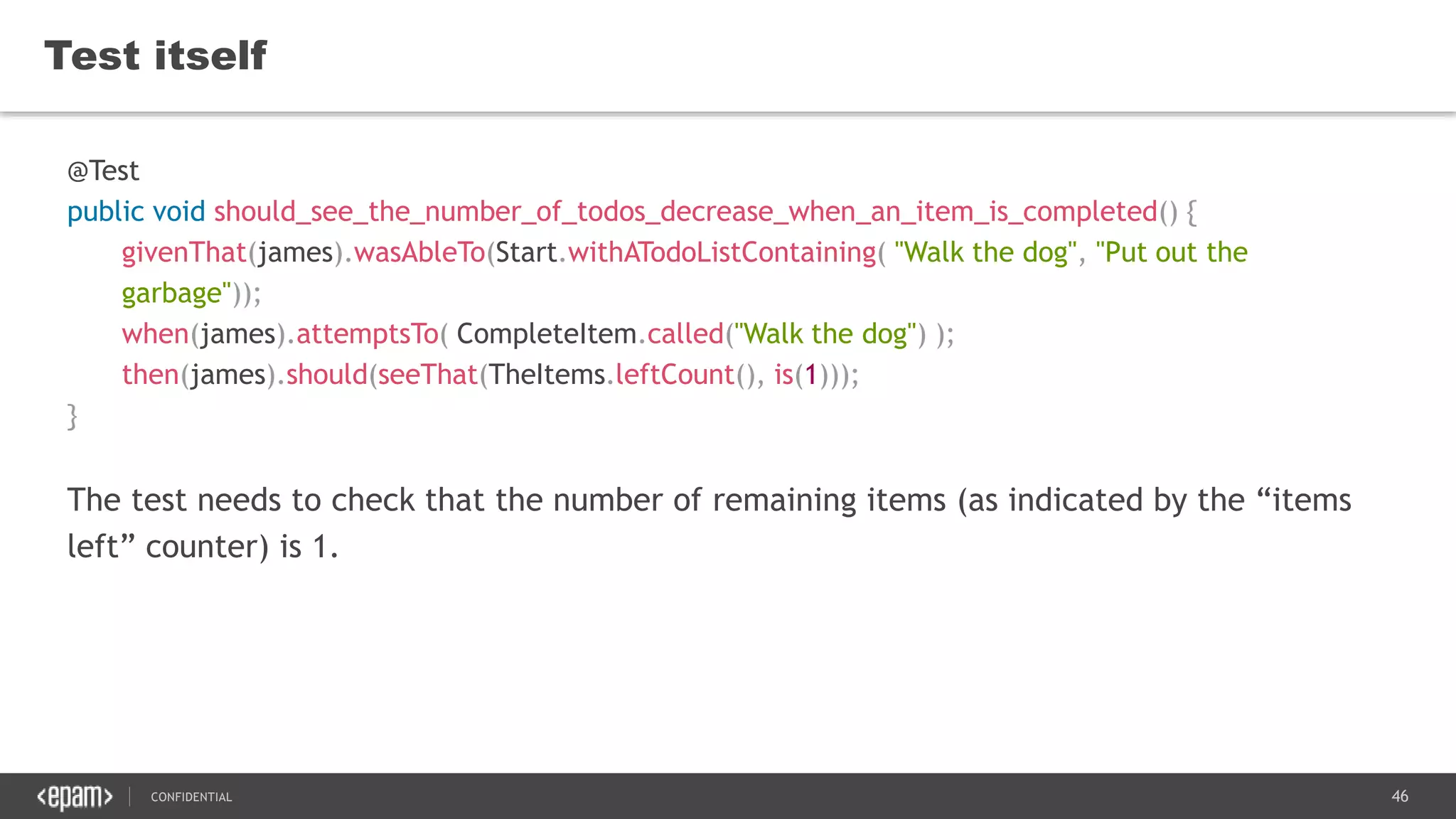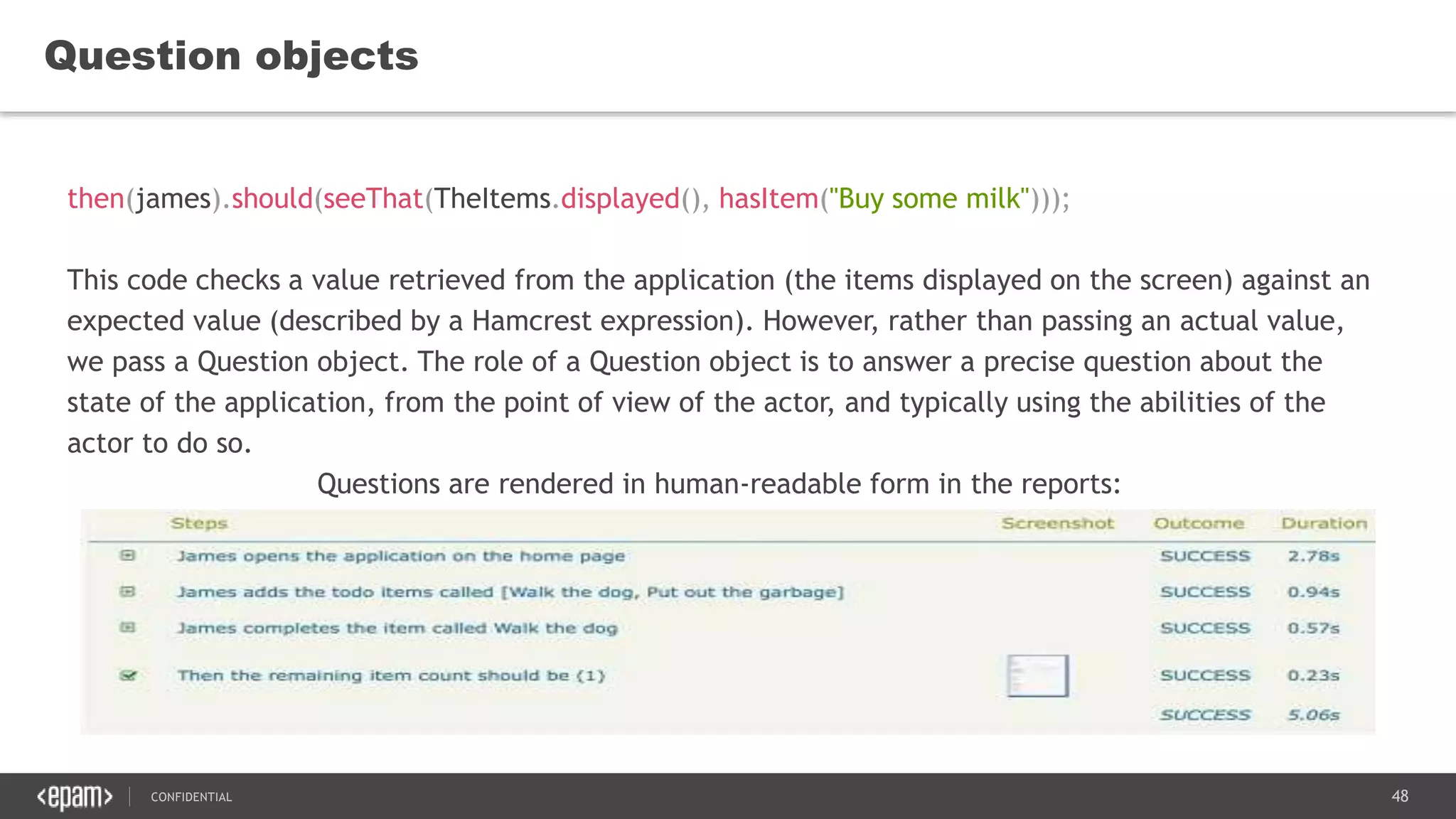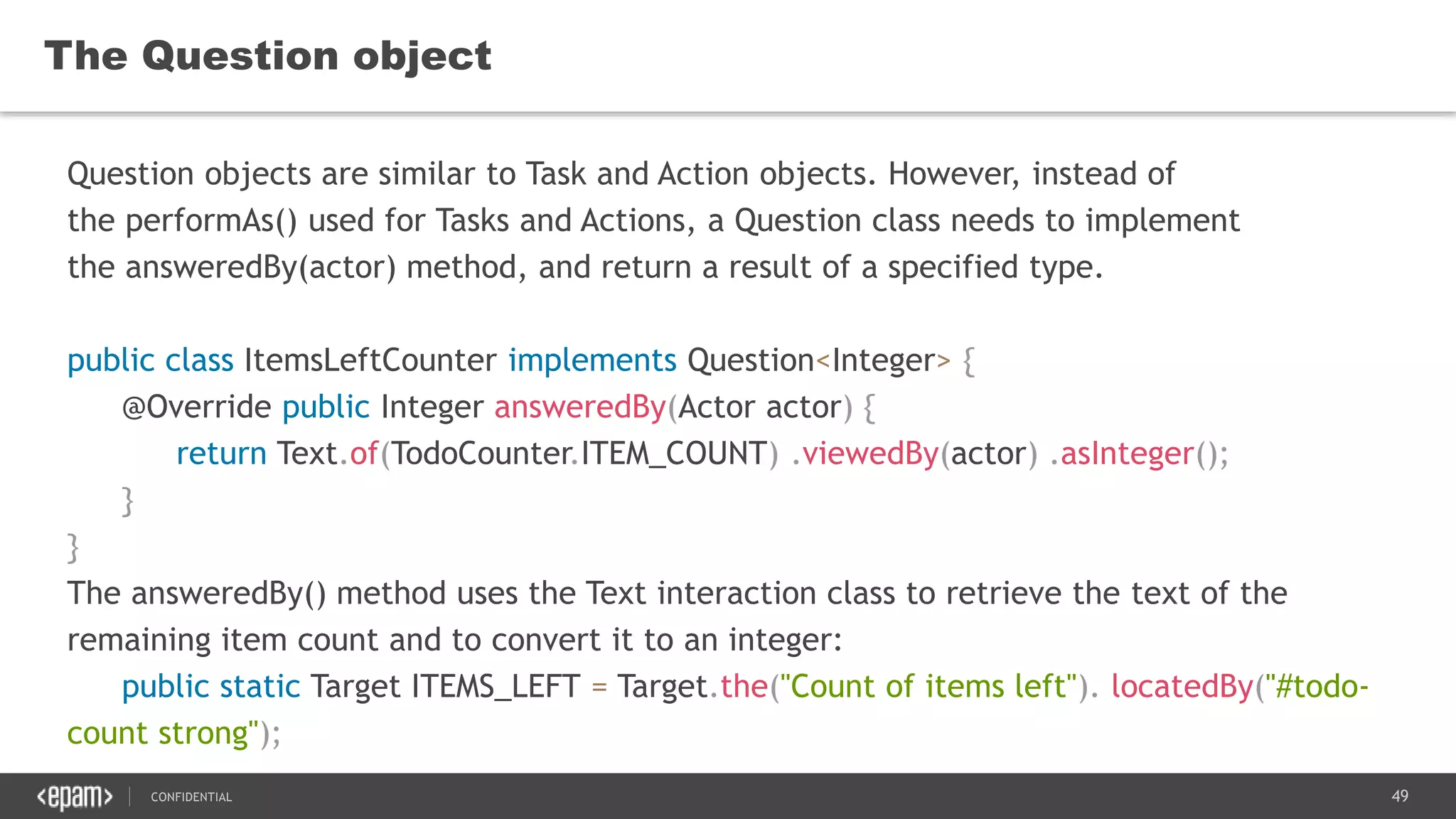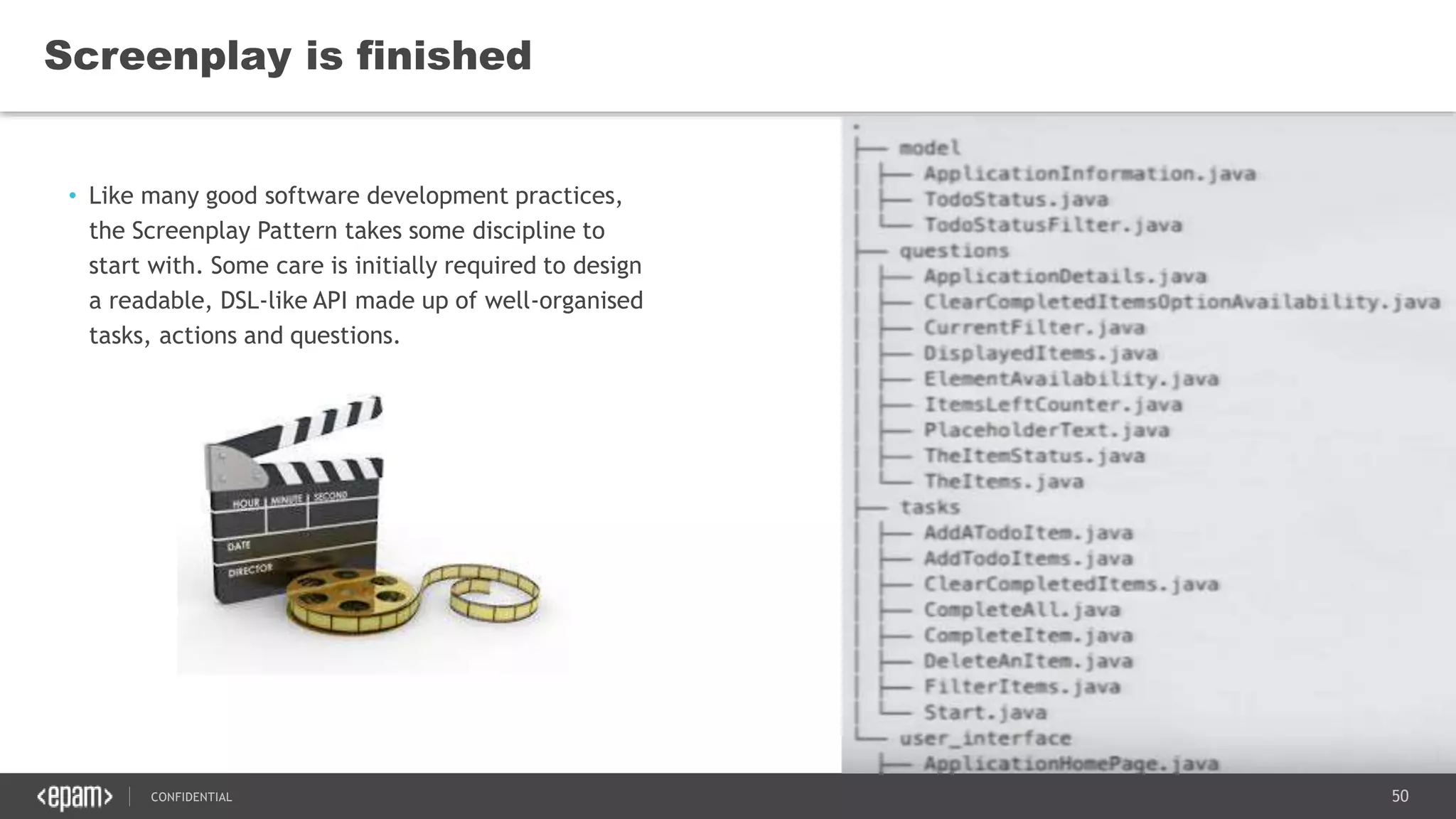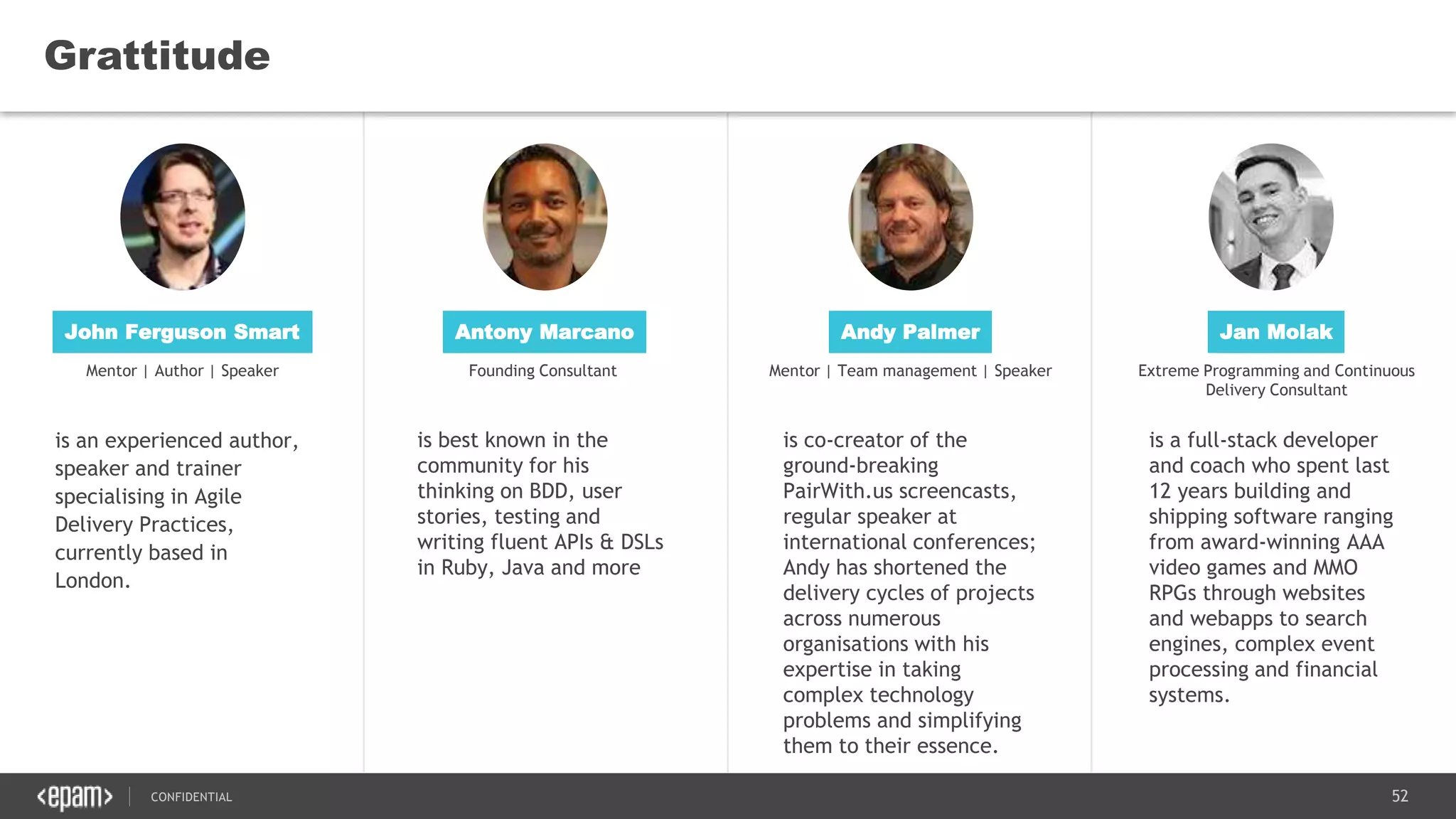The document discusses the screenplay design pattern for QA automation, emphasizing its advantages over the traditional page object pattern, including better separation of test and page-specific code, easier maintenance, and adherence to software engineering principles. It provides insights into the structure and implementation of automated acceptance tests, using examples such as adding items to a to-do list, while promoting the actor-centric model and the importance of defining clear tasks and abilities. Additionally, the screenplay pattern is highlighted as a robust approach to writing maintainable and scalable test code, making it easier for teams to adapt to changes in application behavior.
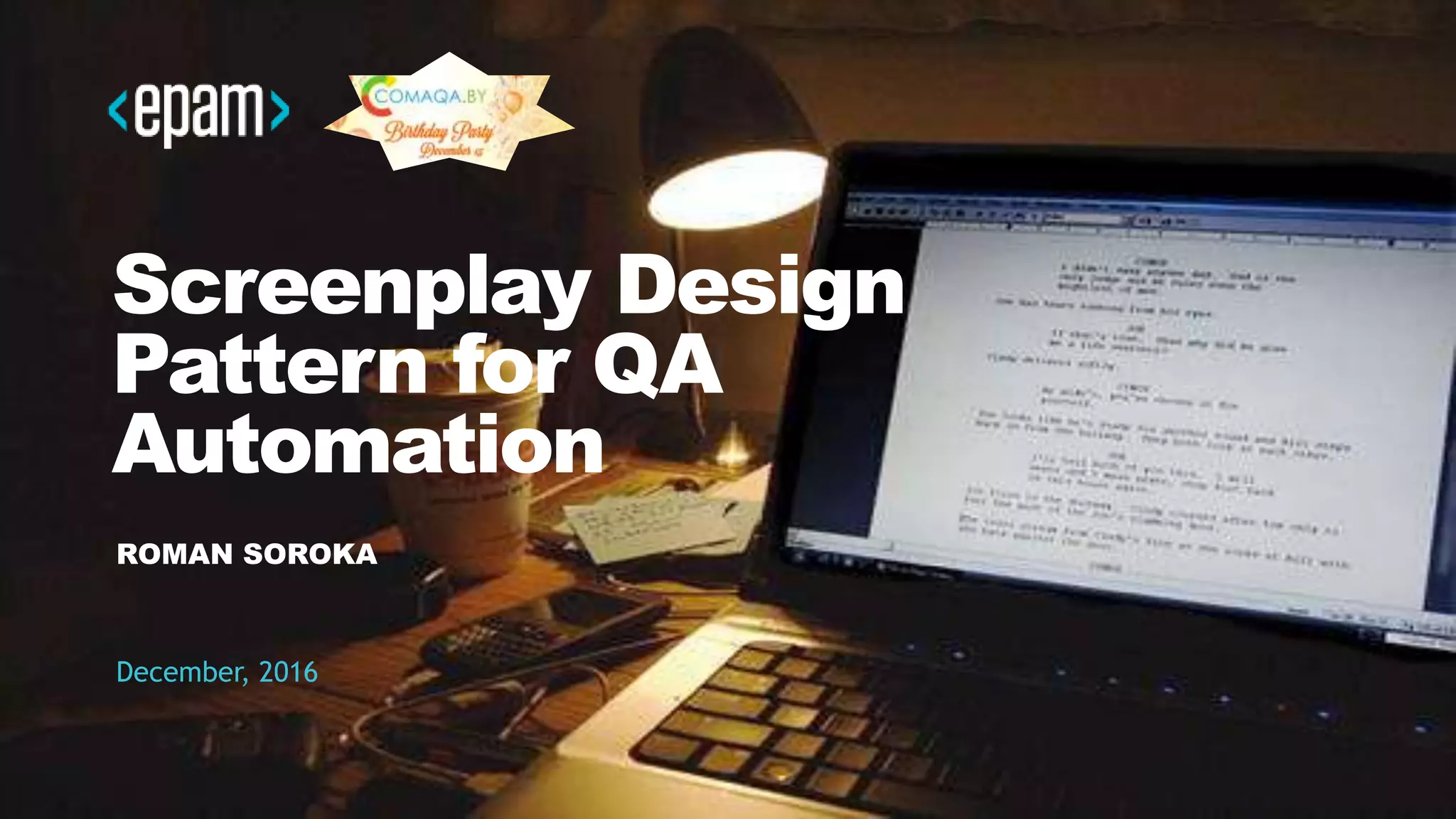
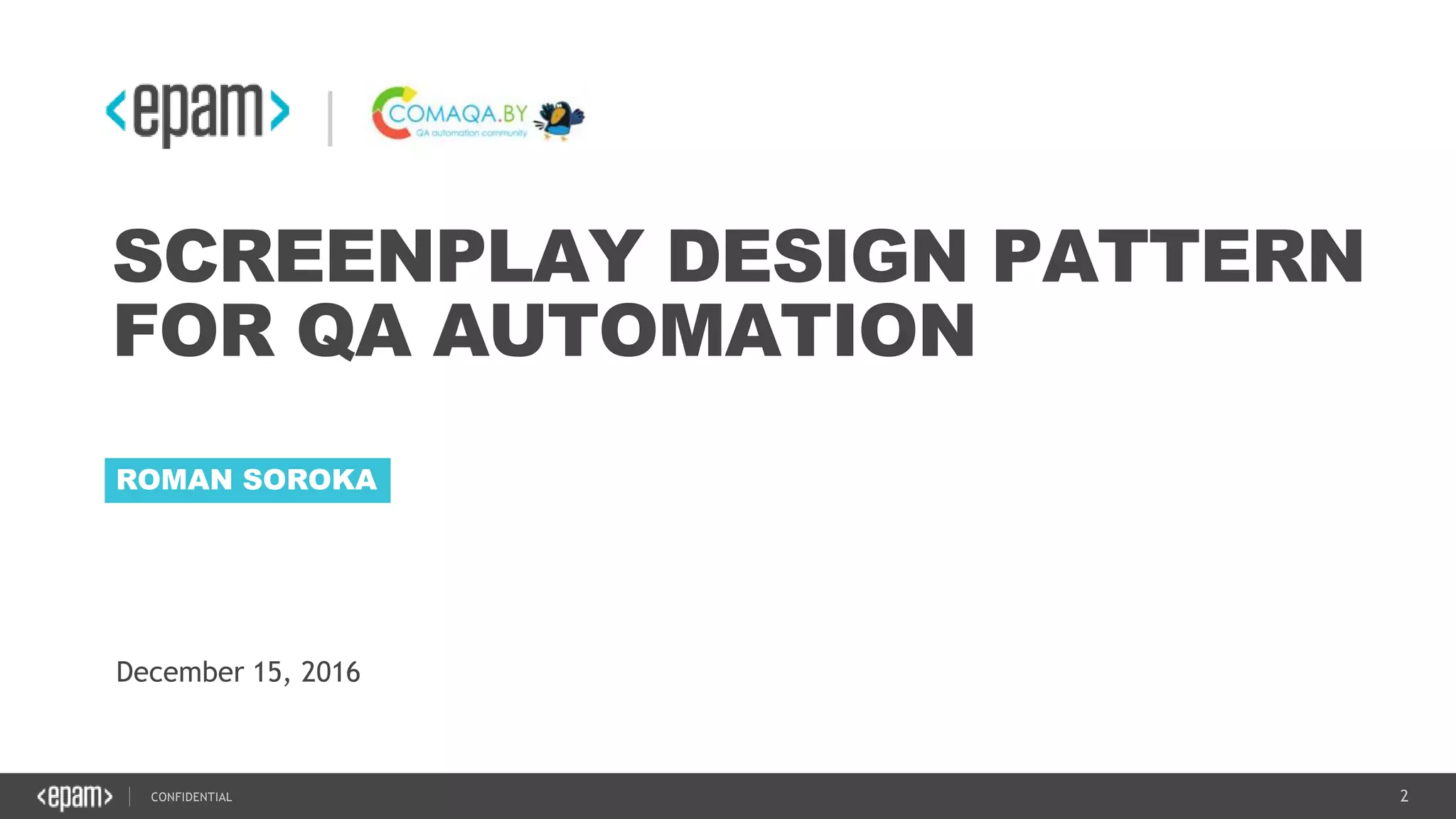


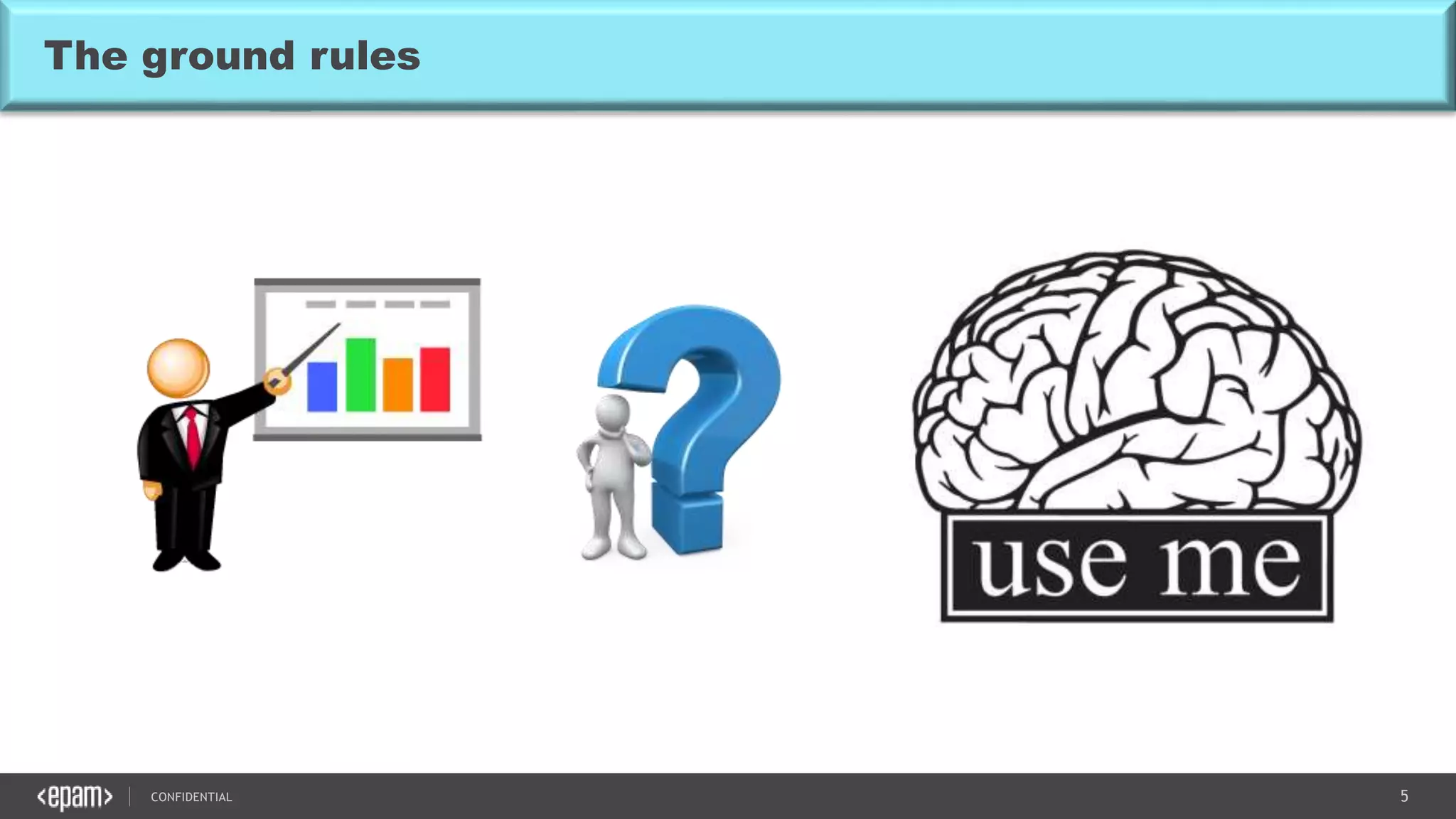
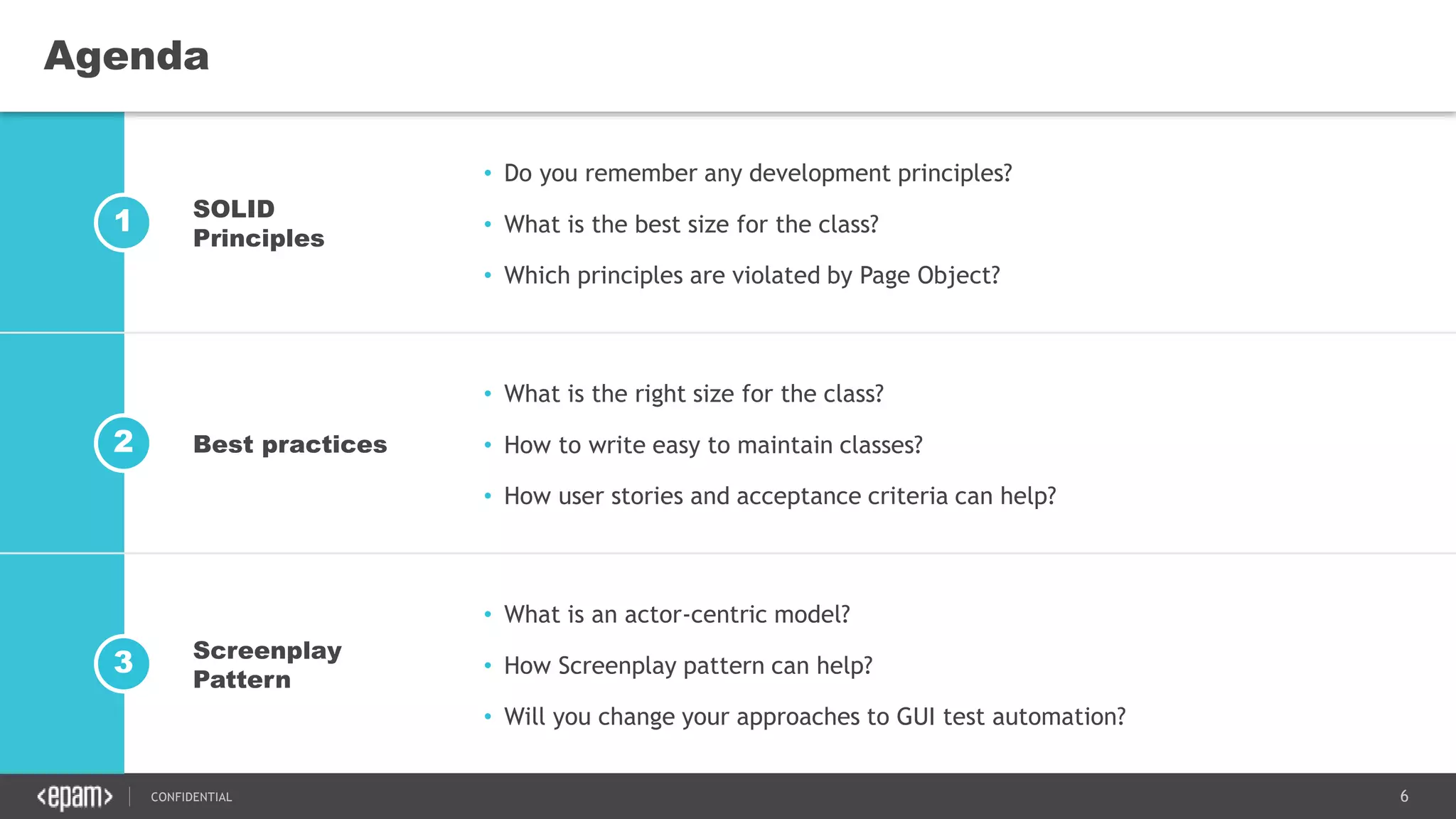
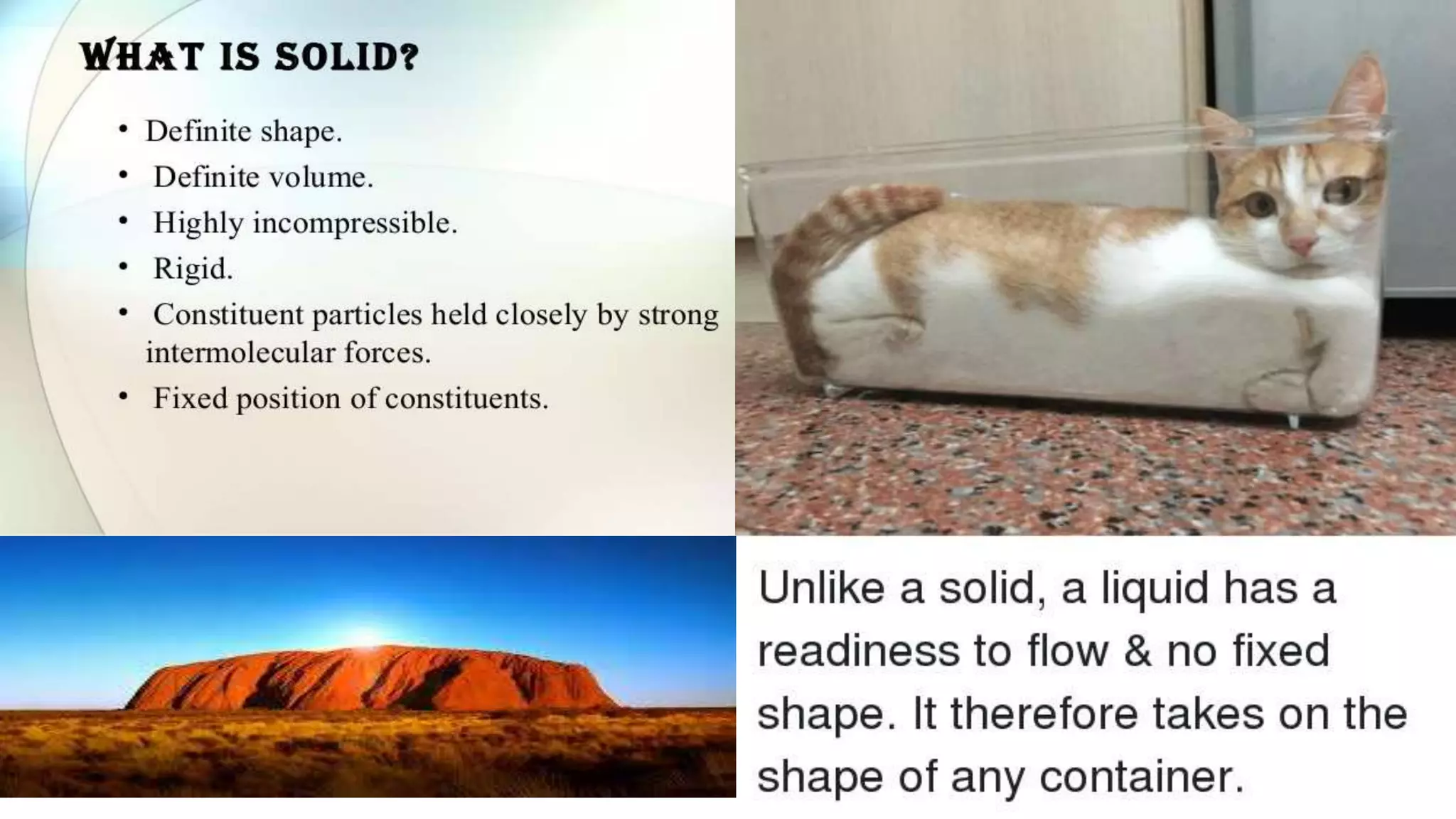









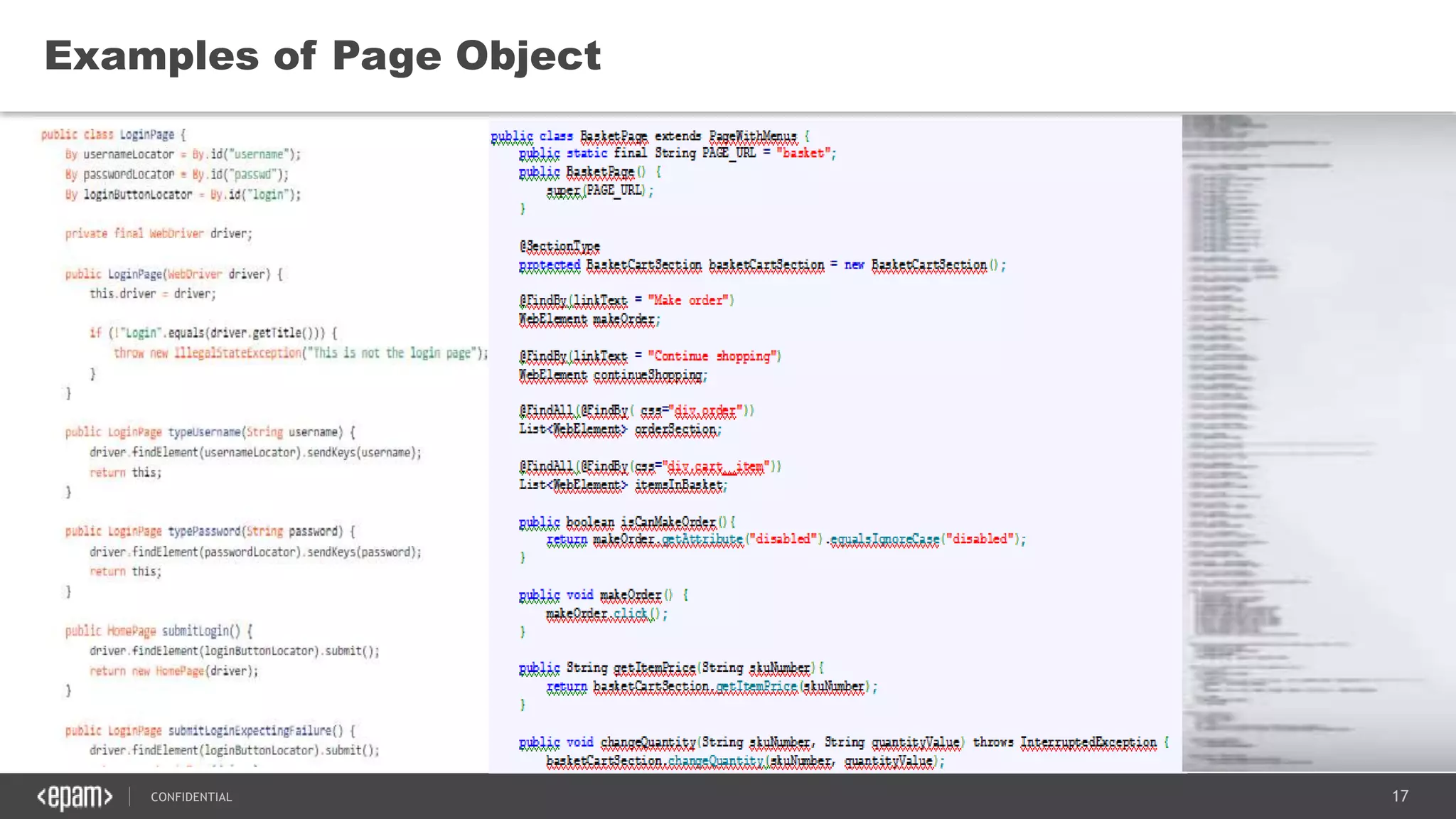



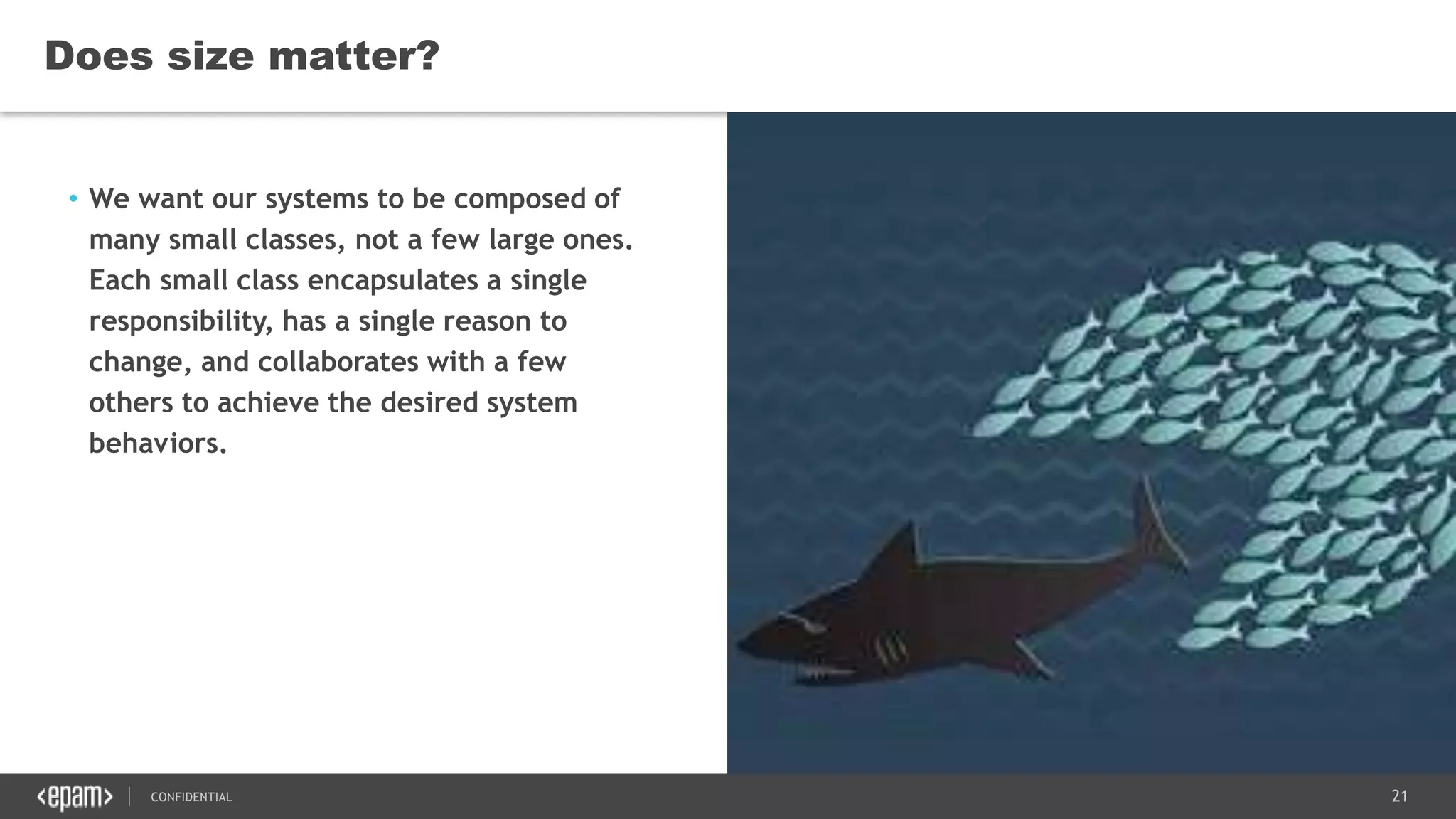

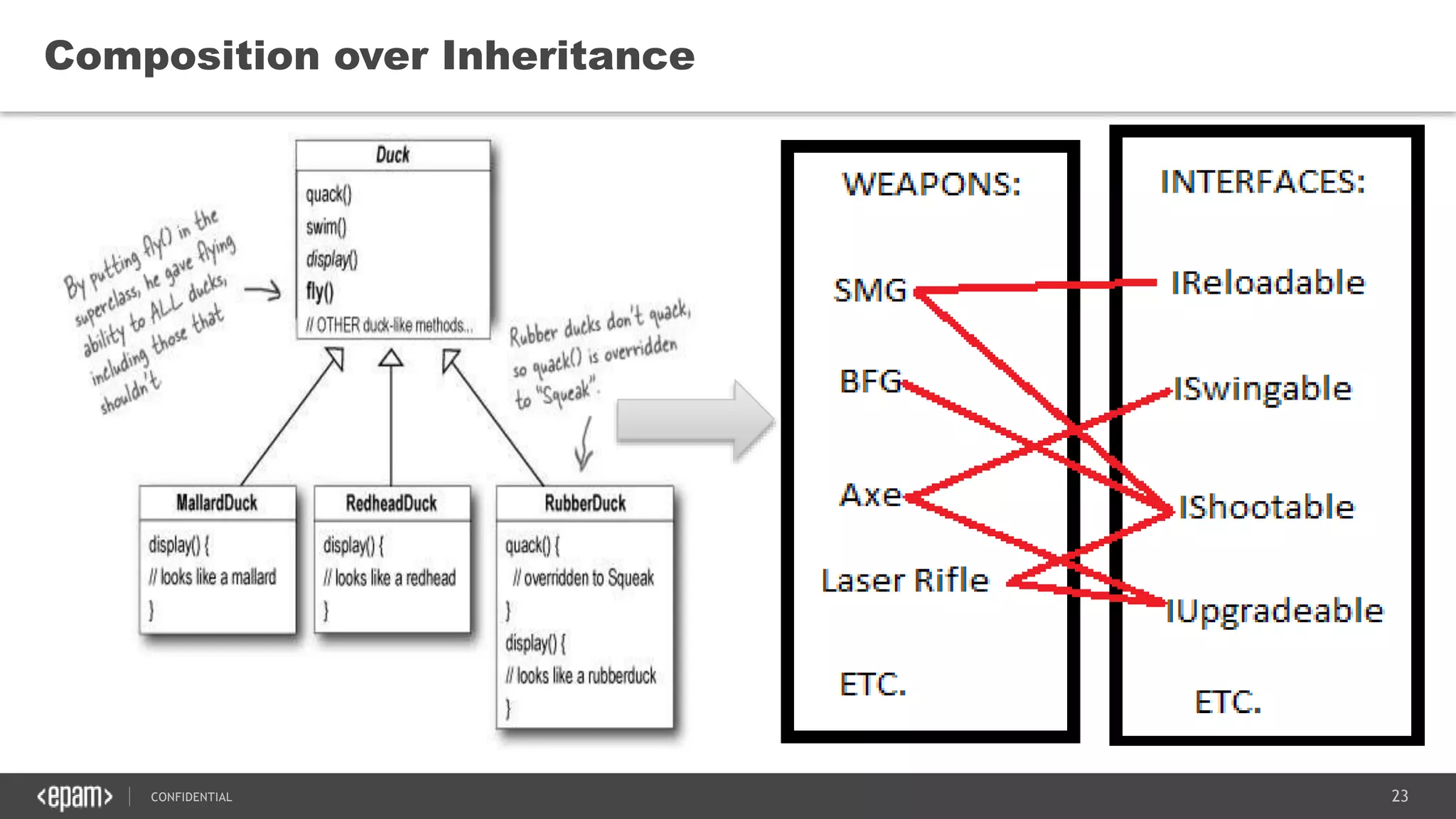
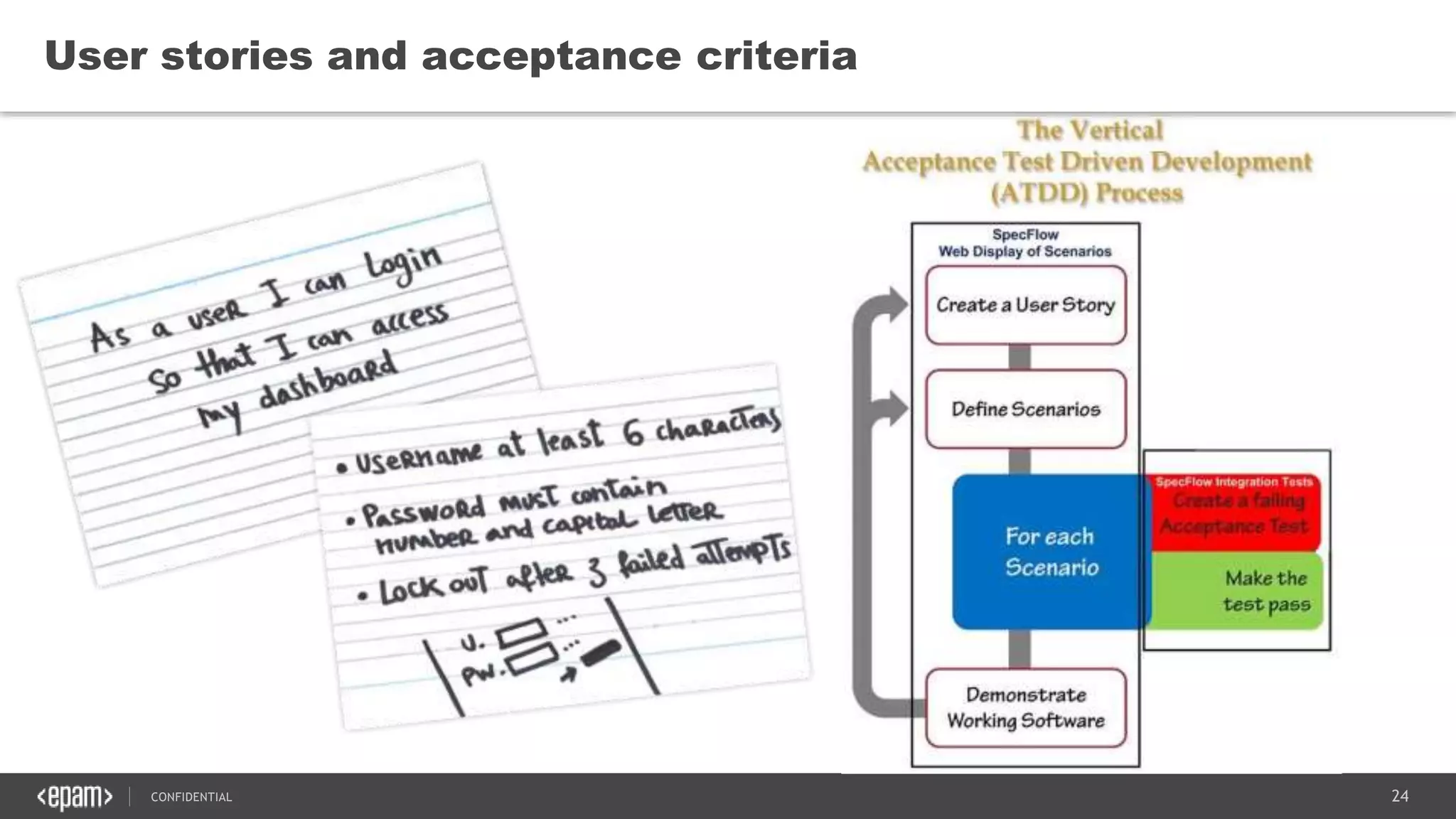
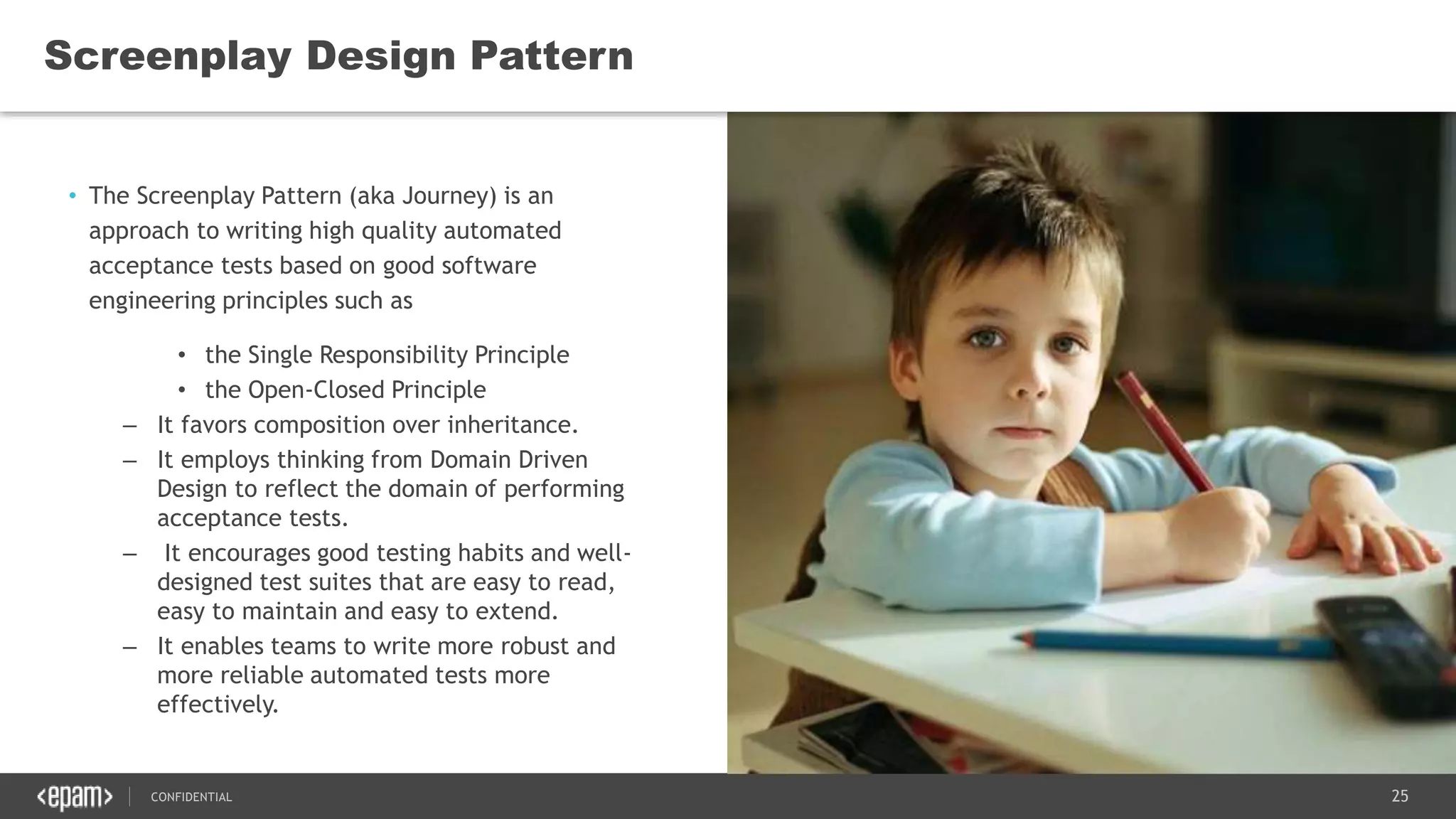
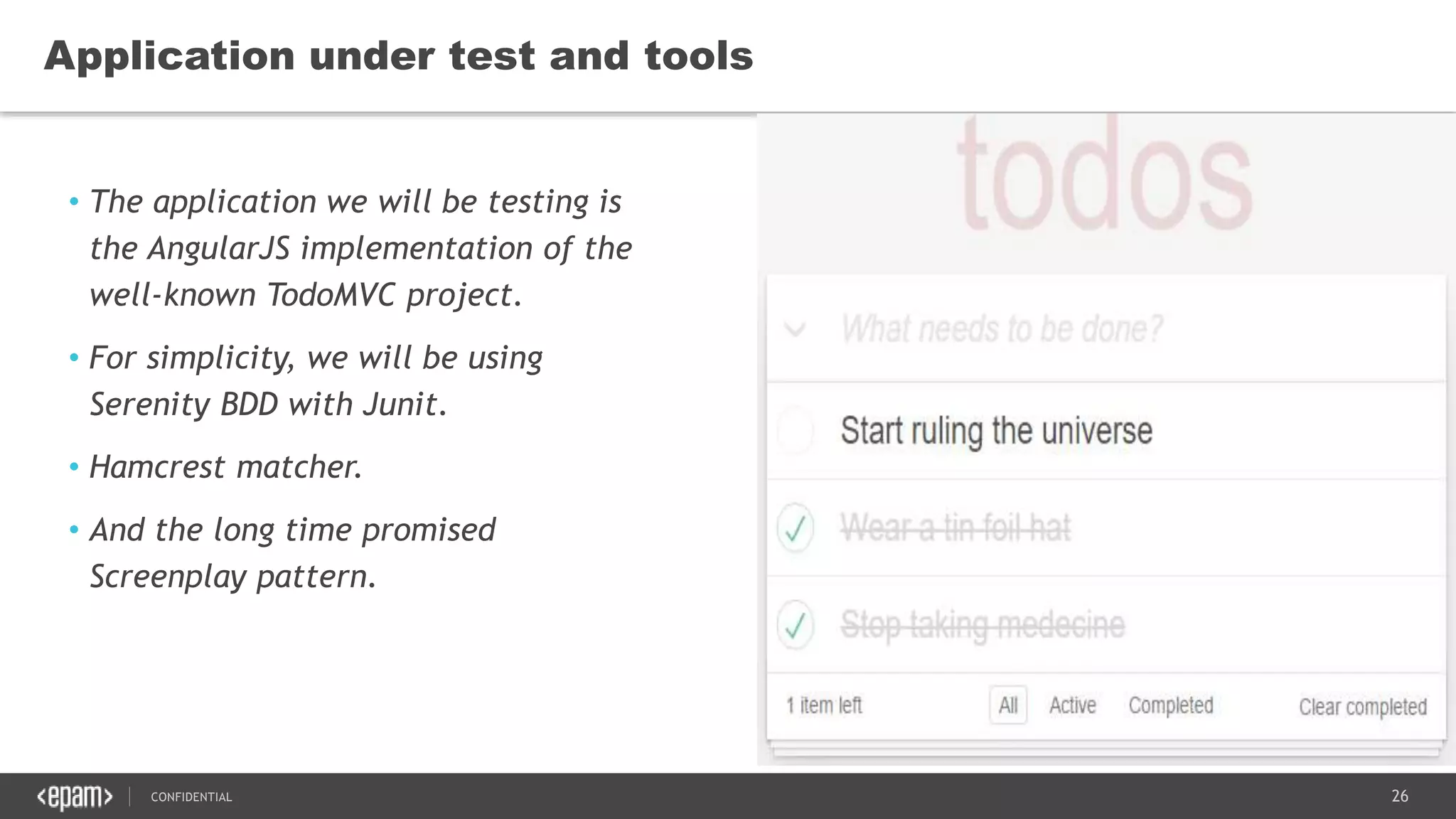

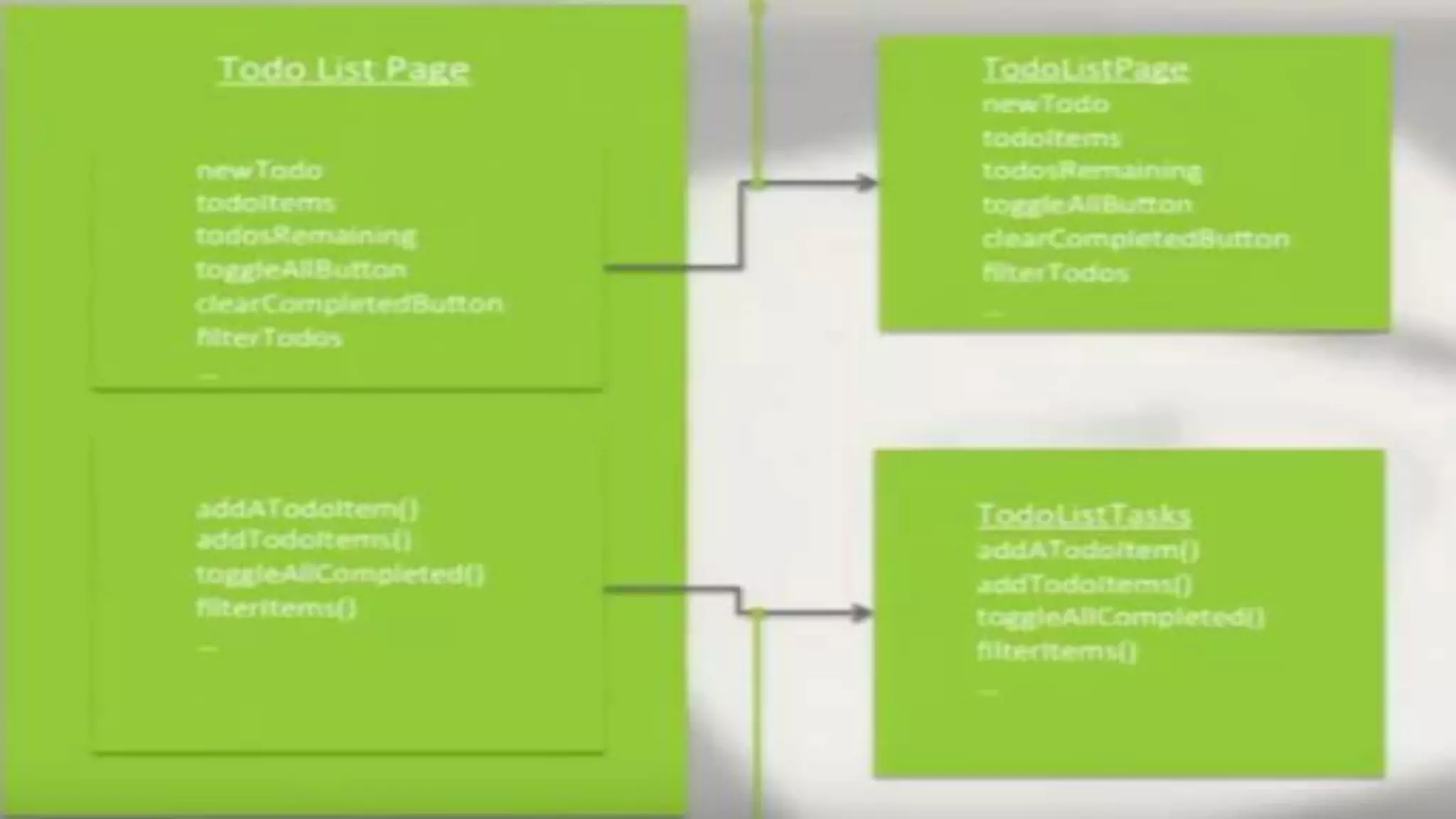
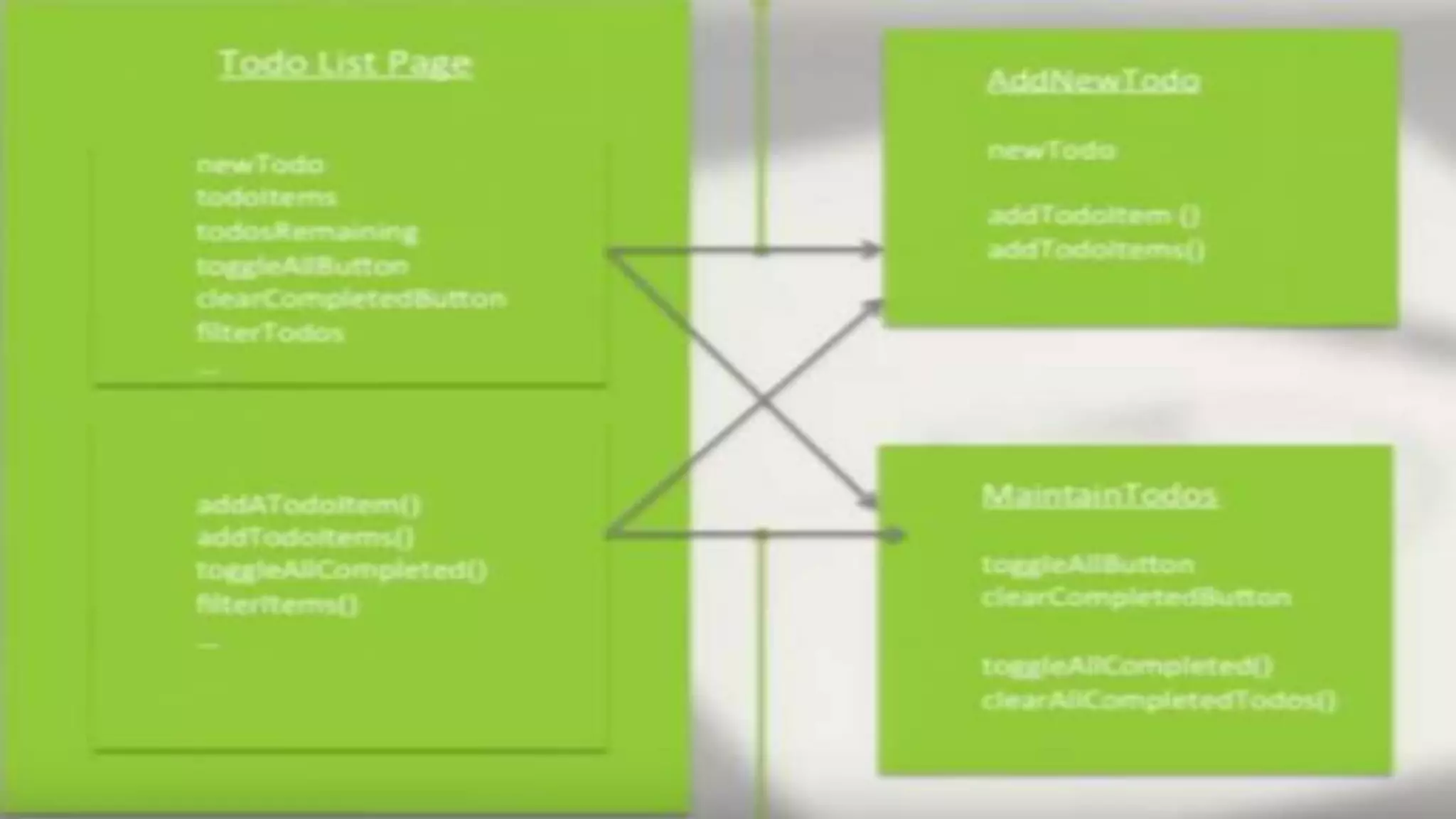
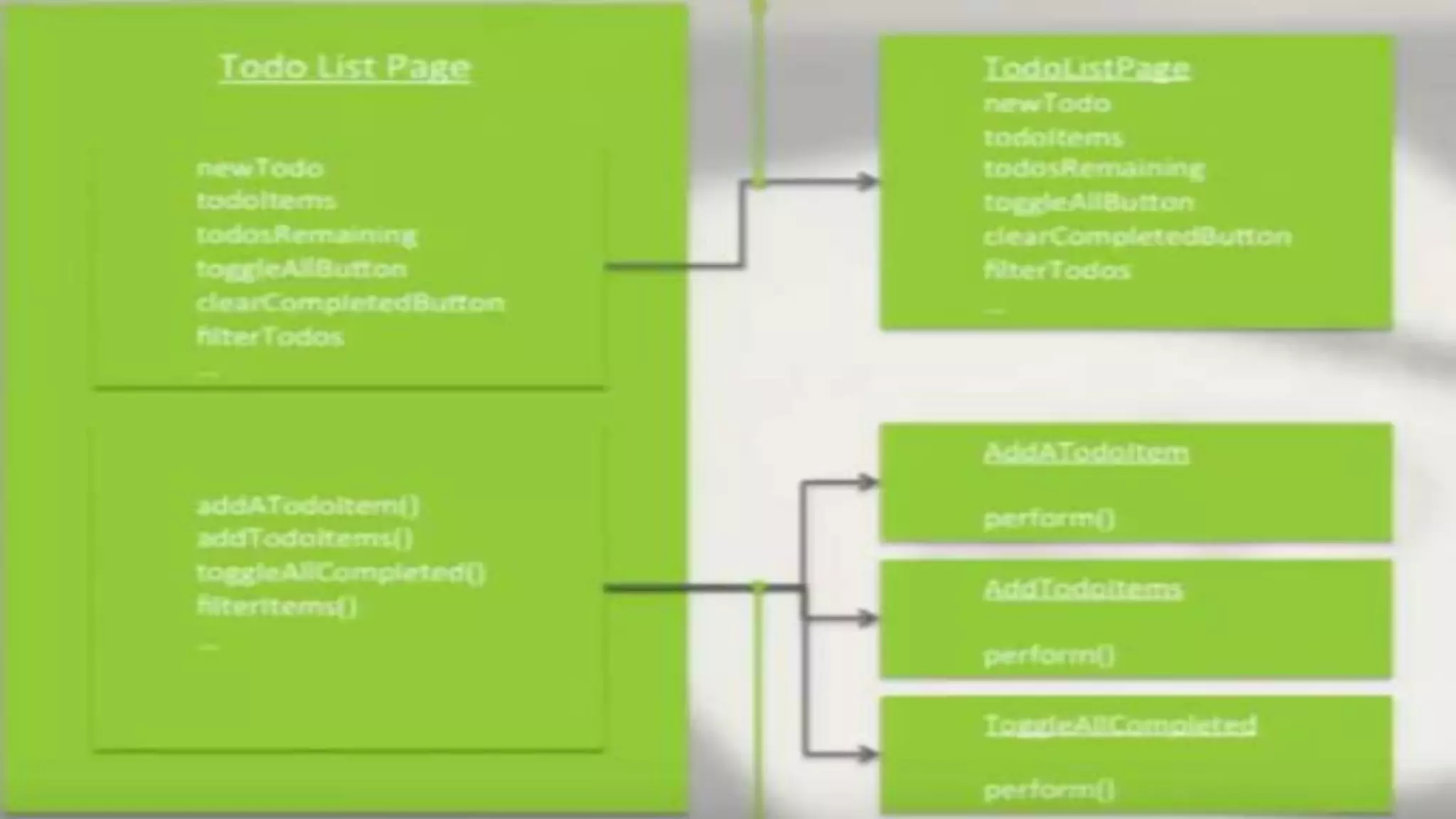
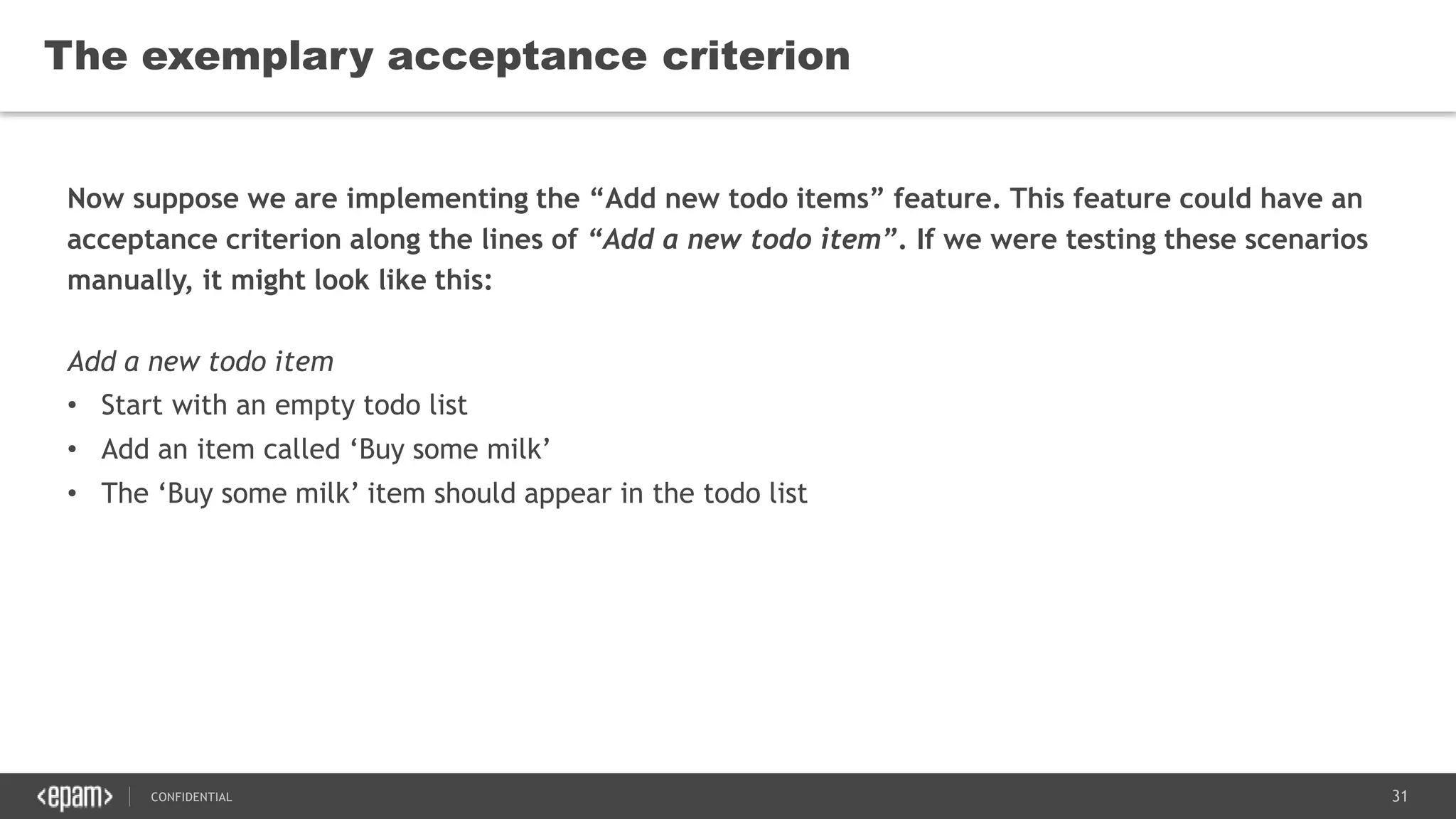


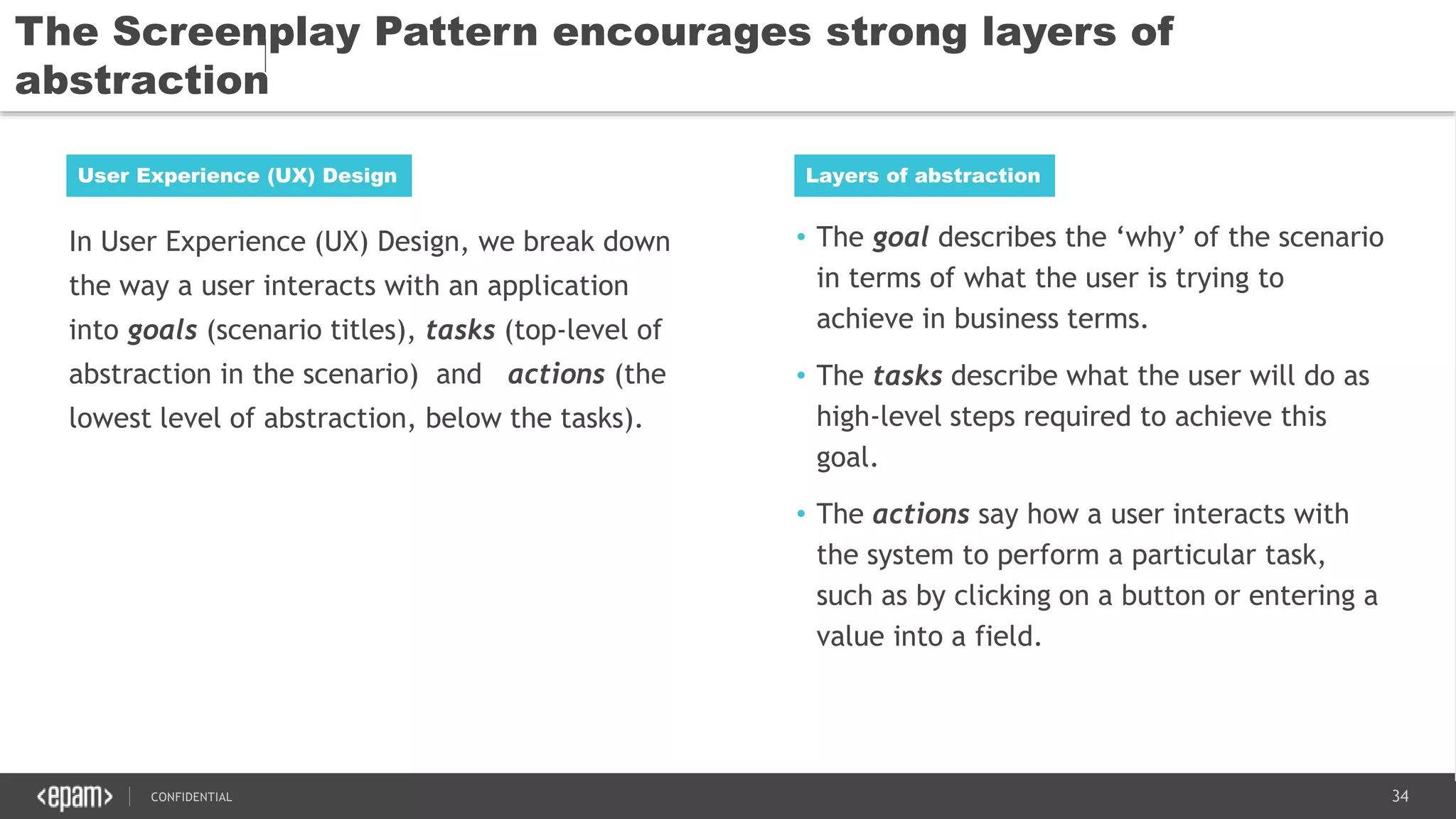

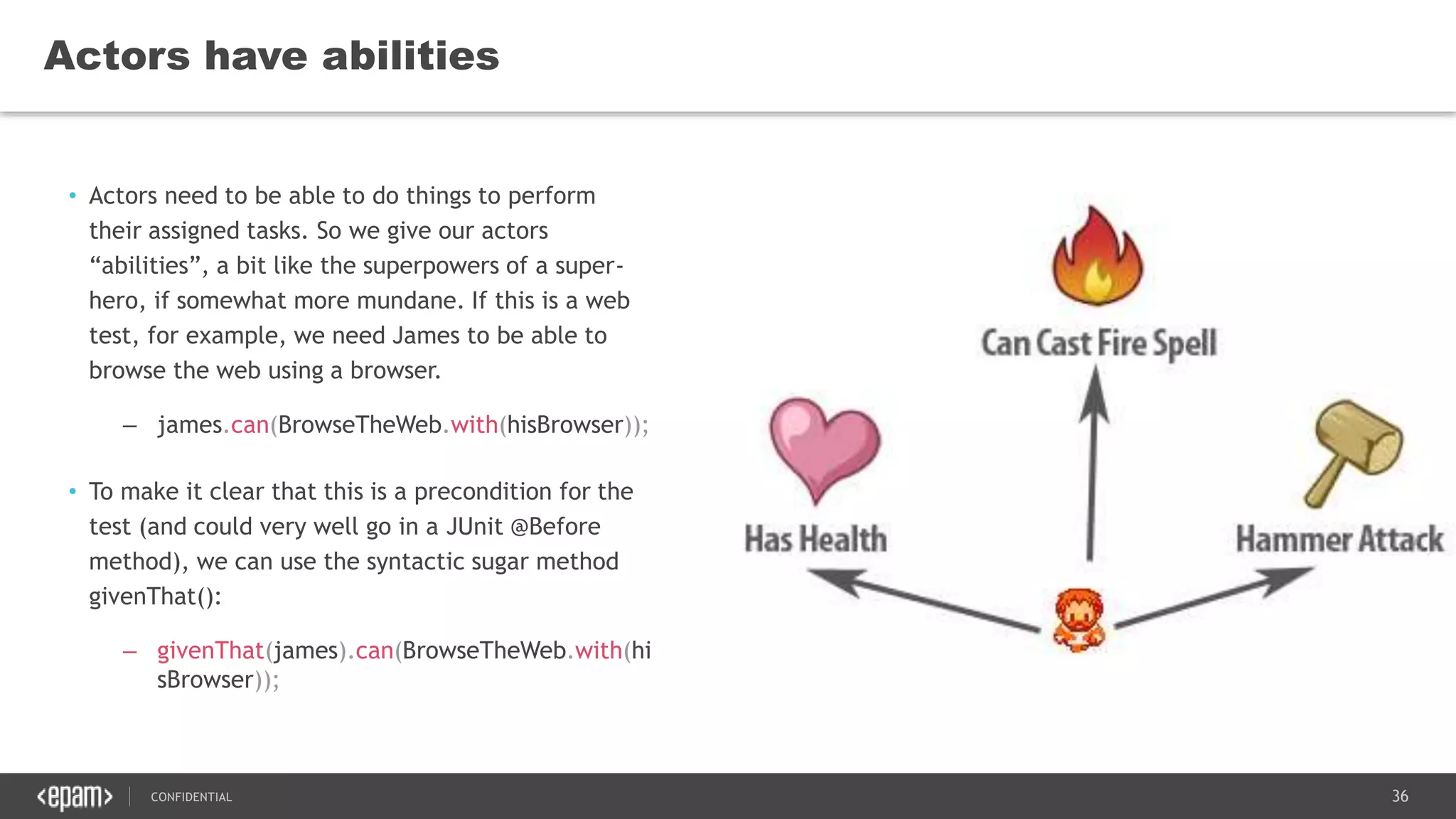

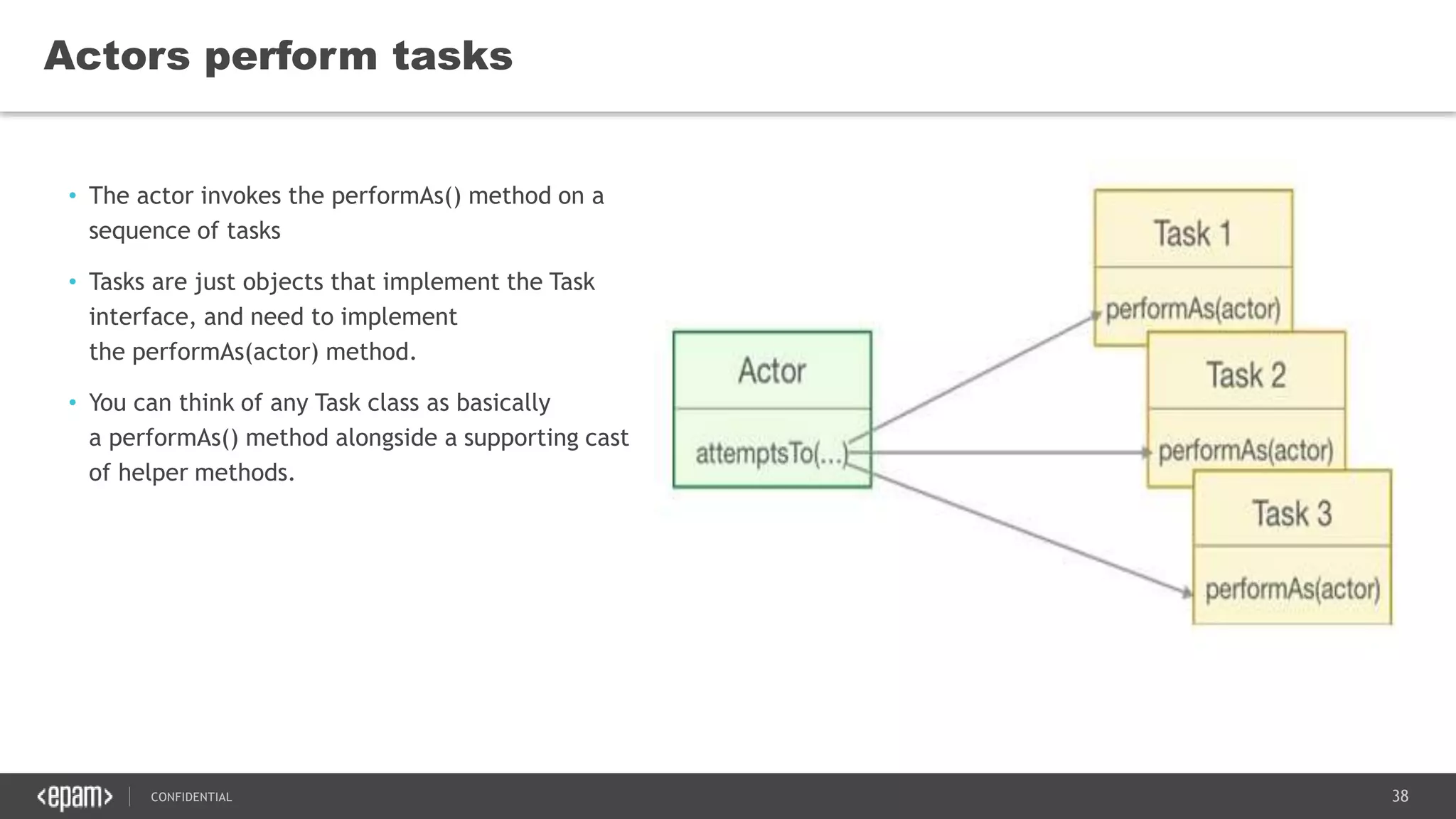
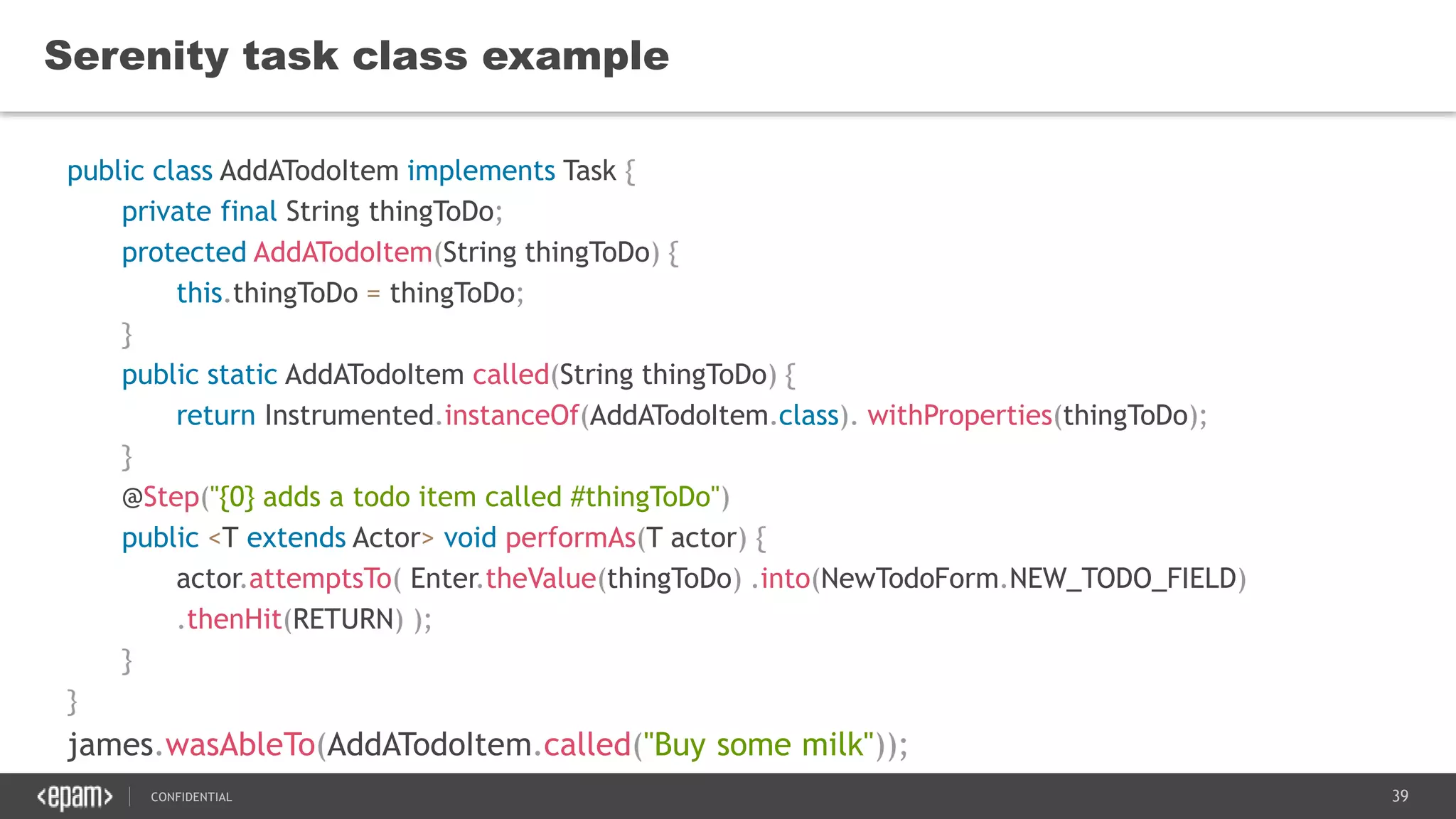
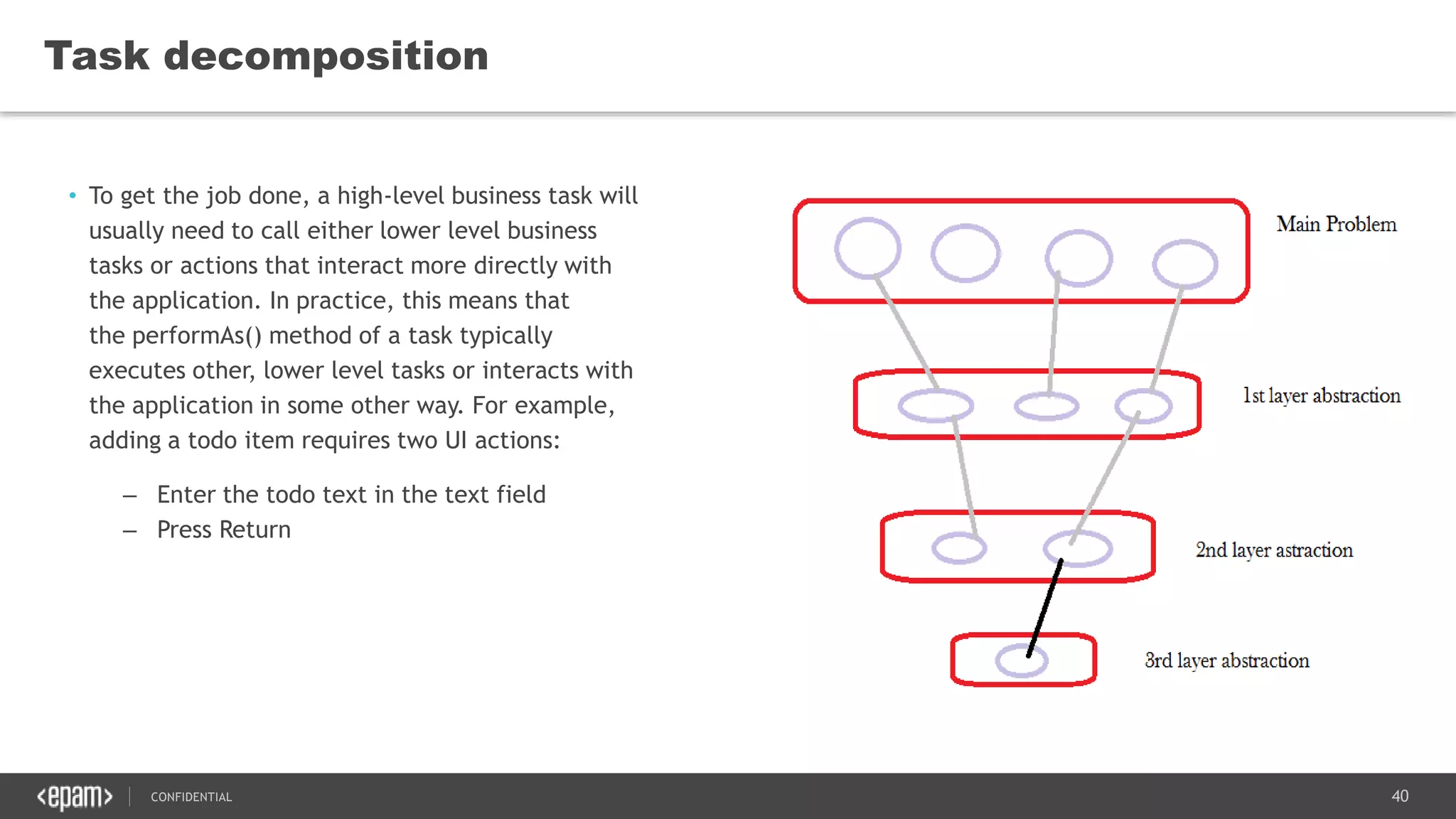
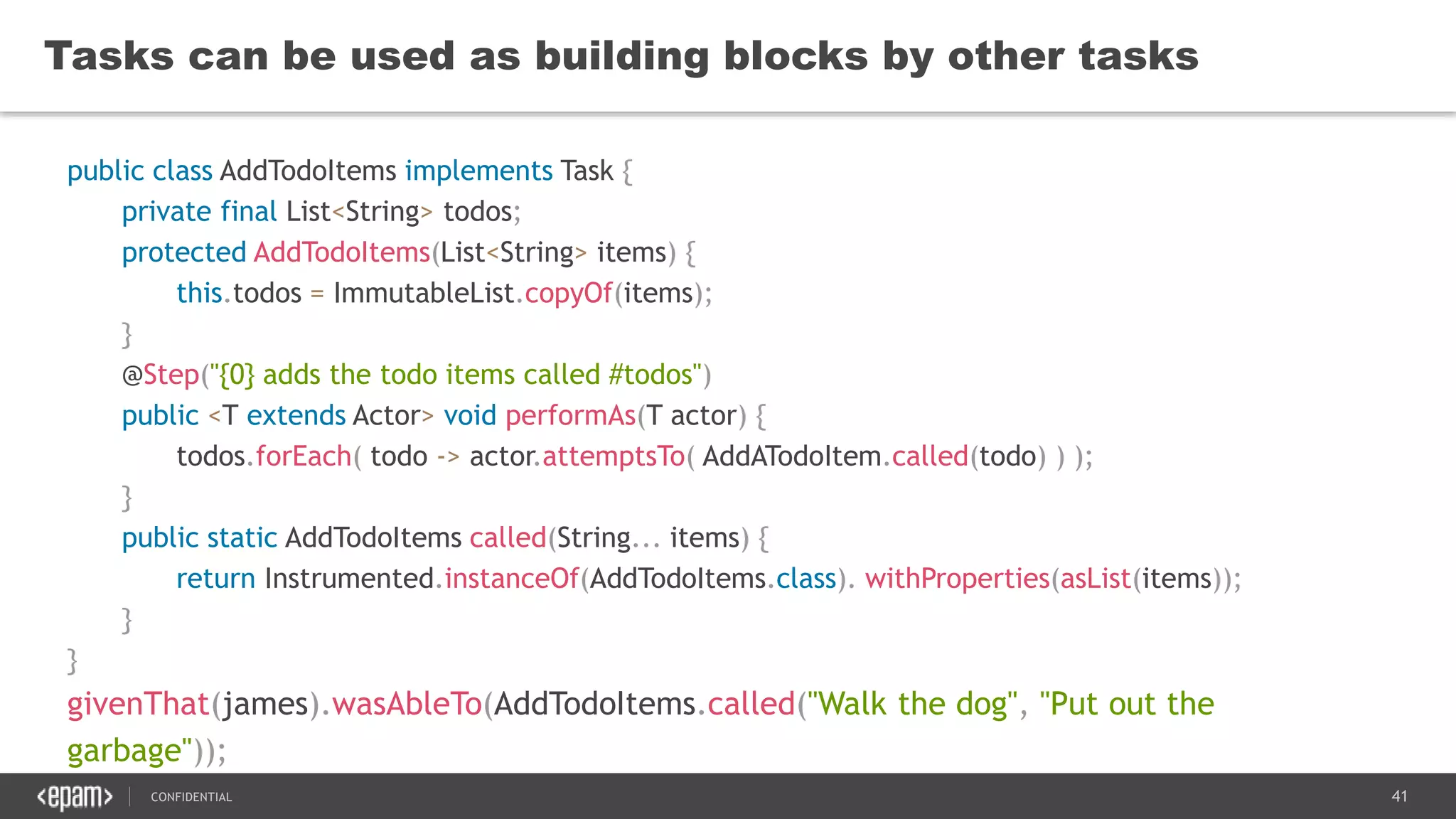
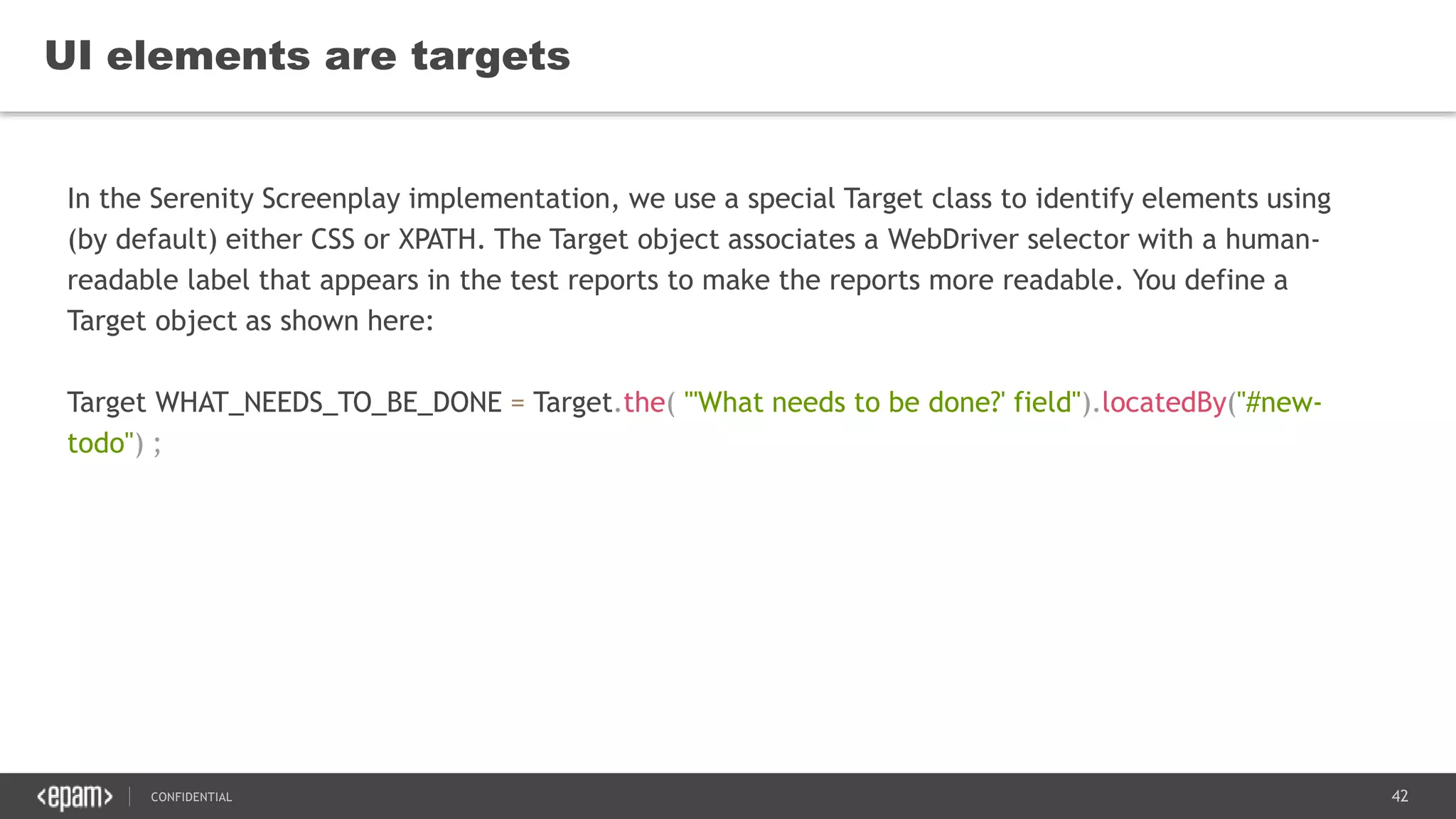
![43CONFIDENTIAL Page object data class public class ToDoList { public static Target WHAT_NEEDS_TO_BE_DONE = Target.the( "'What needs to be done?' field").locatedBy("#new-todo"); public static Target ITEMS = Target.the( "List of todo items").locatedBy(".view label"); public static Target ITEMS_LEFT = Target.the( "Count of items left").locatedBy("#todo-count strong"); public static Target TOGGLE_ALL = Target.the( "Toggle all items link").locatedBy("#toggle-all"); public static Target CLEAR_COMPLETED = Target.the( "Clear completed link").locatedBy("#clear- completed"); public static Target FILTER = Target.the( "filter").locatedBy("//*[@id='filters']//a[.='{0}']"); public static Target SELECTED_FILTER = Target.the( "selected filter").locatedBy("#filters li .selected"); }](https://image.slidesharecdn.com/comaqadecemberromansoroka-161220185009/75/ScreenPlay-Design-Patterns-for-QA-Automation-43-2048.jpg)
